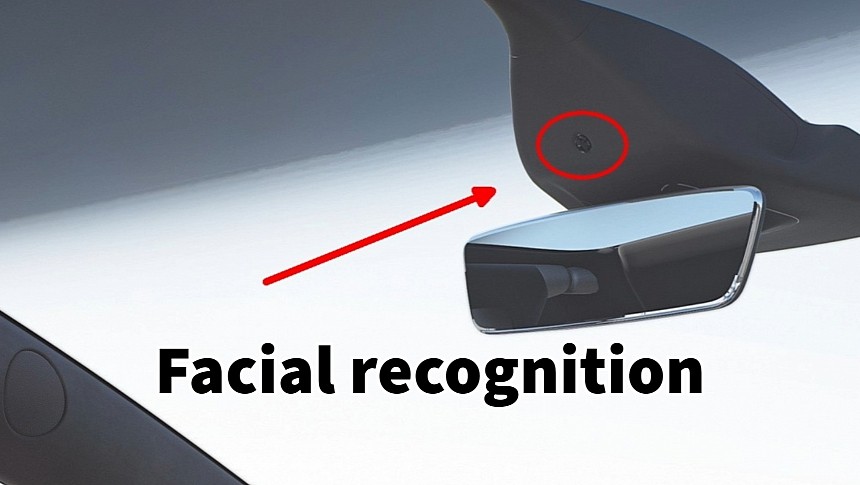Tesla cabin cameras will become more helpful if Tesla's recent patent is implemented in production vehicles. Tesla plans to use facial recognition to apply personalized settings based on the person who drives. The system can also call 911 if the driver is unresponsive or even drive autonomously to the nearest hospital if the vehicle is drivable.
Tesla introduced a cabin camera in its vehicles more as an afterthought than a useful feature. Although a cabin camera was fitted on the Model 3 and Model Y from the get-go, the Model S/X only got this feature in 2021. That was also when Tesla began to use the cameras for driver monitoring, although not in the way other carmakers do. Tesla mostly wanted to collect information about the driver's attentiveness moments before a crash instead of trying to prevent it.
Today, thanks to the NHTSA stepping up and demanding that Tesla change its systems, the cabin cameras in Tesla vehicles are effective tools for ensuring the driver remains focused on the road. In a recent update, the cabin camera features were boosted to offer drowsiness detection even when the Autopilot is not engaged, making it much more helpful and safer. However, Tesla will soon employ facial recognition to offer more advanced functions.
According to Tesla ethical hacker and enthusiast Green (@greentheonly), the 2023.44.1 update will add new features to the cabin camera. Based on data inferred from the software, he discovered that the cabin camera can now be used to determine the number of passengers in the vehicle. This helps the navigation system determine whether a HOV lane should be selected or not, whether driving manually or semi-autonomously. The system can also change audio focus based on the position and size of the occupants.
But it doesn't stop here, as a recently filed patent application reveals. Instead of just counting the number of people in the car, the camera will be enhanced with a facial recognition system to tell exactly who's driving. It can automatically apply a driver's profile at the start, with all the associated settings. This involves adjusting seating, steering wheel, and mirror positions, setting the HVAC blowers, and greeting you by name when entering the vehicle.
The facial recognition patent also describes safety-related actions that can save lives in critical situations. The camera can be used to determine the driver's health condition and call 911 automatically when they become unresponsive due to a medical emergency. When Tesla solves autonomy, the system can also drive autonomously to the nearest hospital if the car is still drivable.
However useful these new AI-driven features might sound, there are people concerned about giving Tesla so much personal data. It also prompted some people to remind Tesla that the windshield wipers still don't work reliably after years of promises.
Today, thanks to the NHTSA stepping up and demanding that Tesla change its systems, the cabin cameras in Tesla vehicles are effective tools for ensuring the driver remains focused on the road. In a recent update, the cabin camera features were boosted to offer drowsiness detection even when the Autopilot is not engaged, making it much more helpful and safer. However, Tesla will soon employ facial recognition to offer more advanced functions.
According to Tesla ethical hacker and enthusiast Green (@greentheonly), the 2023.44.1 update will add new features to the cabin camera. Based on data inferred from the software, he discovered that the cabin camera can now be used to determine the number of passengers in the vehicle. This helps the navigation system determine whether a HOV lane should be selected or not, whether driving manually or semi-autonomously. The system can also change audio focus based on the position and size of the occupants.
But it doesn't stop here, as a recently filed patent application reveals. Instead of just counting the number of people in the car, the camera will be enhanced with a facial recognition system to tell exactly who's driving. It can automatically apply a driver's profile at the start, with all the associated settings. This involves adjusting seating, steering wheel, and mirror positions, setting the HVAC blowers, and greeting you by name when entering the vehicle.
The facial recognition patent also describes safety-related actions that can save lives in critical situations. The camera can be used to determine the driver's health condition and call 911 automatically when they become unresponsive due to a medical emergency. When Tesla solves autonomy, the system can also drive autonomously to the nearest hospital if the car is still drivable.
However useful these new AI-driven features might sound, there are people concerned about giving Tesla so much personal data. It also prompted some people to remind Tesla that the windshield wipers still don't work reliably after years of promises.
New feature - cabin camera could now be used to enable/disable HOV lane use - requires additional cabin camera permisison (and also Tesla should enable the feature for the car before it's seen)
— green (@greentheonly) November 25, 2023
Also MPP (most probable path) navigation mode is another thing added






